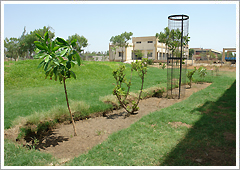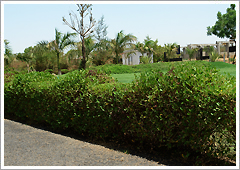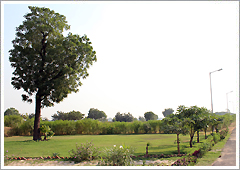Wastewater, Sewage and Effluent Treatment Plant Engineering & Consulting Services

Water Treatment Plant & Supply Network Engineering & Consulting Services
Solid Waste Management Engineering & Consulting Services
Infrastructure Management

Garden Management

Green Building Design
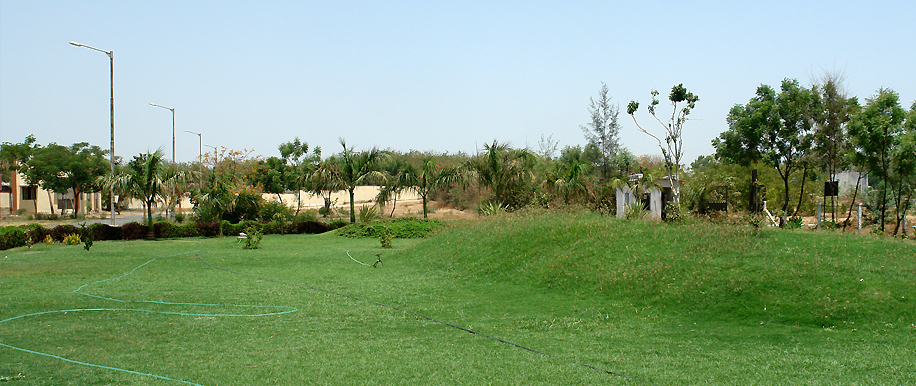
Landscape Design
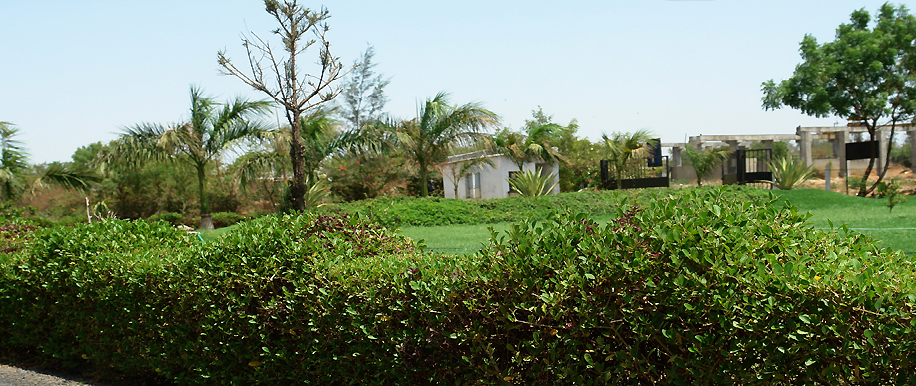
Environment Consultancy
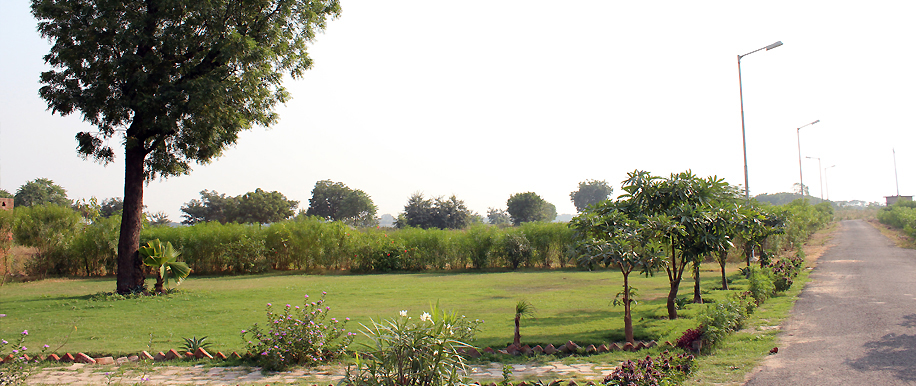
Environment Development Strategies
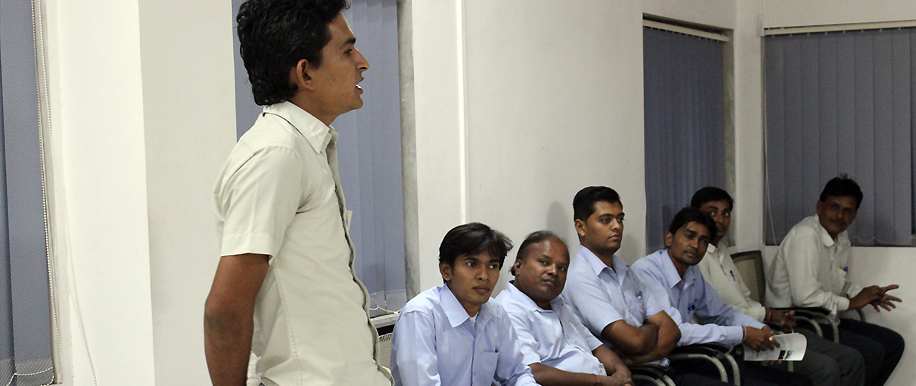
Staff Meeting @ R3 EMSPL
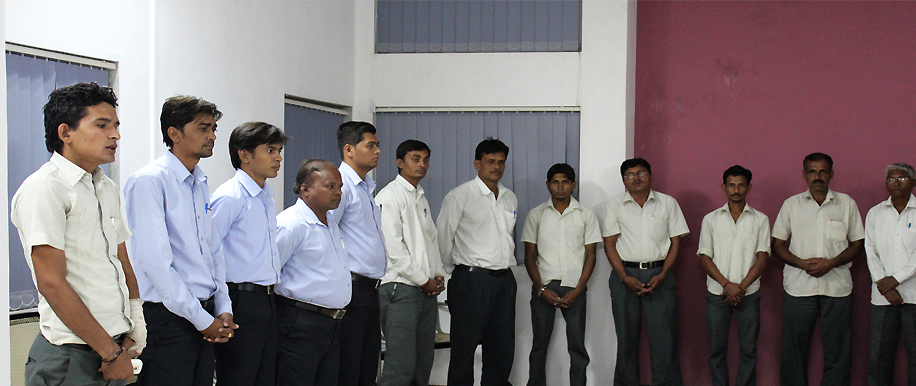
Training @ R3 EMSPL
Core Specification
To achieve our goal we are having well qualified, experienced team with expertise in environment, mechanical, electrical and instrumentation engineering to offer a complete environmental solution from innovative concepts to operation and maintenance. Our field of specialization includes:Design Engineering Planning and Management
Environment, Mechanical, civil, electrical and instrumentation
Environment
- Continuously research and develop new technologies and techniques to improve the environmental acceptability of engineering projects
- Evaluate environmental and social impacts of engineering projects in association with the public and other engineers
- Efficient operationof processes to treat water and waste to a standard acceptable for discharge and/or recycling
- Work with occupational health experts to ensure a hazard-free working environment
- Prepare reports and studies on the best approach to environmental management in new and existing engineering projects, taking into account environmentally sustainable economic activity and legal, environmental and industrial factors

Mechanical
Our objective
- Apply safe working practices and understand the principles of preventive and first-line maintenance
- Correctly diagnose a range of mechanical faults and plan a suitable course of action
- Understanding of the principles of water treatment, waste management and power transmission systems; recognize, remove and refit taper-lock bushes, keyed shafts, belts, chains & couplings; install & align shafts; tension drive train components,replace broken studs, dismantle and replace drive belt, etc.
- Correctly remove and refit various types of bearings (roller, ball, etc.) identify various bearing types, understand their typical applications &recognize common defects
- Understanding of how to remove and replace seals and gland packing
- Understanding the operation of various motors, pumps (positive displacement, centrifugal, hydraulic and air) and state typical faults and their symptoms
- Understanding the operation of various gearboxes, (helical, spur and worm-wheel)

Electrical
Our objective
- Practice safe working methods on electrical systems
- Understand the relevant regulative requirements
- Demonstrate an understanding of electrical principles and units
- Diagnose basic faults and recognize their associated symptoms
- Ability to identify a wide range of electrical equipment & devices and understanding their principles of operation / connections
- Understanding the principles of earthing / protection and associated protective devices
- Understanding of electrical systems, switchgear and circuit types
- Experience to work with a range of cable types and carry out correct terminations and connections
- Recognize the industrial motor types and understand their operation, connections and maintenance requirements
- Trained to use electrical test equipment effectively and carry out testing of a range of motors, solenoids, cables, etc. (using insulation, continuity, tong testers, etc.)
- Expert in identify motor and power circuit faults
- Understanding of the use of circuit diagrams as an aid to maintenance
- Ability to access electrical enclosures and replace fuses, reset overloads etc.
- Perform electrical isolation, testing for dead, etc. on a wide range of devices and circuits safely.

Instrumentation
Our objective
- Understand the health and safety implications of working with process control systems
- Understand and appreciate the operation of typical instrumentation systems
- Identify the various methods of signal transmission
- Understanding the equipment used in
- Current loops (process meters, trip amplifiers, transmitters, current repeaters, chart recorders)
- Temperature measurement (RTDs, thermocouples, etc.)
- Pressure measurement (bourdon gauges, air and electrical DP cells, etc.)
- Level measurement (bubblers, pressure cells, ultrasonic, load cells, electro static, etc.)
- Flow measurement (orifice plates, mag-flow meters, mass-flow meters, weirs, flumes, etc.)
- Water treatment parameter measurement (TSS, COD, turbidity, etc.)
- Output devices (electrical valves, flow control valves, valve positioners, I to P converters)
- Automations system (PLC, SCADA, HMI, etc.)

Infrastructure Planning & Development
- Garden operation and maintenance
- Plantation and planting design
- Garden re-styling
- Garden and landscape design
- Infrastructure operation and management with air-conditioning, plumbing, cleaning and other routine maintenance work
- Infrastructure design with green building concept
- The regular maintenance to a high standard of lawn and grass areas; hedges; and other planted areas.
- The planting, establishment and maintenance of bedding schemes.
- The planting of new and replacement trees, shrubs, hedges, herbaceous perennials, bulbs and sowing seed of annuals, biennials and perennials at the times required.
- Routine maintenance tasks such as leaf clearing and pruning.
- The reinstatement as necessary of some grassed areas and shrubberies in special circumstances.
- Site security, the opening and closing of all sites and presence on site daily (including weekends) throughout the year to carry out patrolling duties and normal horticultural tasks such as watering as necessary, sweeping and the removal of rubbish.
- Sweeping and keeping clean and weed free all paths, paved areas and hard surfacing.

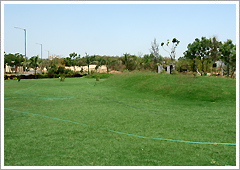
Treatment Processes
We have gained expertise in following major water treatment technologies:
ASP
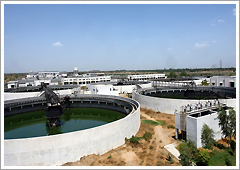
We have gained expertise in following major water treatment technologies:
ASP
Activated sludge refers to a mass of microorganisms cultivated in the treatment process to break down organic matter into carbon dioxide, water, and other inorganic compounds. The activated sludge process has three basic components: 1) a reactor in which the microorganisms are kept in suspension, aerated, and in contact with the waste they are treating; 2) liquid-solid separation; and 3) a sludge recycling system for returning activated sludge back to the beginning of the process. There are many variants of activated sludge processes, including variations in the aeration method and the way the sludge is returned to the process.
Activated sludge can be appropriate where high removal of organic pollution is required, funds and skilled personnel are available for operation and maintenance, and land is scarce or expensive. Since activated sludge requires the continuous operation of oxygen blowers and sludge pumps, a steady energy supply is a key requirement. The system usually needs some form of pretreatment, such as screening and primary sedimentation.
Activated sludge can be appropriate where high removal of organic pollution is required, funds and skilled personnel are available for operation and maintenance, and land is scarce or expensive. Since activated sludge requires the continuous operation of oxygen blowers and sludge pumps, a steady energy supply is a key requirement. The system usually needs some form of pretreatment, such as screening and primary sedimentation.

Efficient removal of BOD, COD and nutrients when designed and professionally operated according to local requirements. The process itself has flexibility and numerous modifications can be tailored to meet specific requirements (e.g. for nitrogen removal). Activated sludge is the best documented and most widely used form of secondary wastewater treatment.
UASB
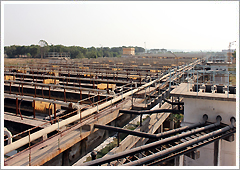
Upflow anaerobic sludge blanket technology, normally referred to as UASB reactor is a form of anaerobic digester that is used in the treatment of wastewater.
UASB uses an anaerobic process whilst forming a blanket of granular sludge which suspends in the tank. Wastewater flows upwards through the blanket and is processed (degraded) by the anaerobic microorganisms. The upward flow combined with the settling action of gravity suspends the blanket with the aid of flocculants. The blanket begins to reach maturity at around 3 months. Small sludge granules begin to form whose surface area is covered in aggregations of bacteria. In the absence of any support matrix, the flow conditions create a selective environment in which only those microorganisms, capable of attaching to each other, survive and proliferate. Eventually the aggregates form into dense compact biofilms referred to as "granules”. A picture of anaerobic sludge granules can be found here.
UASB uses an anaerobic process whilst forming a blanket of granular sludge which suspends in the tank. Wastewater flows upwards through the blanket and is processed (degraded) by the anaerobic microorganisms. The upward flow combined with the settling action of gravity suspends the blanket with the aid of flocculants. The blanket begins to reach maturity at around 3 months. Small sludge granules begin to form whose surface area is covered in aggregations of bacteria. In the absence of any support matrix, the flow conditions create a selective environment in which only those microorganisms, capable of attaching to each other, survive and proliferate. Eventually the aggregates form into dense compact biofilms referred to as "granules”. A picture of anaerobic sludge granules can be found here.

Biogas with a high concentration of methane is produced as a by-product, and this may be captured and used as an energy source, to generate electricity for export and to cover its own running power. The technology needs constant monitoring when put into use to ensure that the sludge blanket is maintained, and not washed out (thereby losing the effect). The heat produced as a by-product of electricity generation can be reused to heat the digestion tanks.
The blanketing of the sludge enables a dual solid and hydraulic (liquid) retention time in the digesters. Solids requiring a high degree of digestion can remain in the reactors for periods up to 90 days. Sugars dissolved in the liquid waste stream can be converted into gas quickly in the liquid phase which can exit the system in less than a day.
The blanketing of the sludge enables a dual solid and hydraulic (liquid) retention time in the digesters. Solids requiring a high degree of digestion can remain in the reactors for periods up to 90 days. Sugars dissolved in the liquid waste stream can be converted into gas quickly in the liquid phase which can exit the system in less than a day.
SBR
The Sequencing Batch Reactor (SBR) is an activated sludge process designed to operate under non-steady state conditions. An SBR operates in a true batch mode with aeration and sludge settlement both occurring in the same tank. The major differences between SBR and conventional continuous-flow, activated sludge system is that the SBR tank carries out the functions of equalization aeration and sedimentation in a time sequence rather than in the conventional space sequence of continuous-flow systems. In addition, the SBR system can be designed with the ability to treat a wide range of influent volumes whereas the continuous system is based upon a fixed influent flow rate. Thus, there is a degree of flexibility associated with working in a time rather than in a space sequence.
SBRs produce sludge with good settling properties providing the influent wastewater is admitted into the aeration in a controlled manner. Controls range from a simplified float and timer based system with a PLC to a PC based SCADA system with color graphics using either flow proportional aeration or dissolved oxygen controlled aeration to reduce aeration to reduce energy consumption and enhance the selective pressures for BOD, nutrient removal, and control of filaments [1]. An appropriately designed SBR process is a unique combination of equipment and software. Working with automated control reduces the number of operator skill and attention requirement.
The majority of the aeration equipment of sequencing batch reactors consists of jet, fine bubble, and coarse bubble aeration systems. The main focus of this report is a jet aerated sequencing batch reactor activated sludge system.
MSBR
The Modified Sequencing Batch Reactor, MSBR system combines the advantages of a flow through activated sludge system and sequencing batch reactor technology. A nutrient removal MSBR system adds the features of biological nutrient removal to the activated sludge system. Additionally, thickening of return mixed liquor suspended solids combined with anaerobic mixed liquor flow splitting to the anoxic cells was developed in this study. The improved system achieved high removal efficiency for BOD5, COD, total nitrogen, and phosphorus.
Supply, Collection and Distribution Network
- The network of pipes used to collect and carry rain, waste water and trade waste away for treatment and disposal is called the sewerage network.
- The operating and maintenance of sewerage network includes responsibility for the transportation of sewage from public, private or government properties.
- The waste water sewage must be transferred to the relevant waste water treatment works or to the mainland for onward transmission to different water treatment facilities. We, R3 Environment Management Services Pvt. Ltd. use a range of expertise to ensure the system runs smoothly.
Solid Waste Management
Municipal solid waste (MSW), commonly known as trash or garbage, refuse or rubbish is a waste type consisting of everyday items that are discarded by the public. R3 Environment Management Services Pvt. Ltd. is fully capable for efficiently management of solid waste.
Municipal solid waste (MSW), also called Urban Solid Waste, and is a waste type that includes predominantly household waste (domestic waste) with sometimes the addition of commercial wastes, construction and demolition debris, sanitation residue, and waste fromstreets collected by a municipality within a given area. They are in either solid or semisolid formand generally exclude industrial hazardous wastes. MSW can be broadly categorized into five broad categories as-

• Biodegradable waste: food and kitchen waste, green waste (vegetables, flowers, leaves, fruits), paper (can also be recycled)
• Recyclable material: paper, glass, bottles, cans, metals, certain plastics, etc.
• Inert waste: construction and demolition waste, dirt, rocks, debris
• Composite wastes: waste clothing, Tetra Packs, waste plastics such as toys
• Domestic hazardous waste (also called "household hazardous waste") & toxic waste: medication, e-waste, paints, chemicals, light bulbs, fluorescent tubes, spray cans, fertilizer and pesticide containers, batteries, shoe polish
Zero Waste Concept
Our specialized dedicated team has thoroughly researched for Indian MSW characteristics and processes for recycling it. Here, in India, management of MSW is quite a tedious task and needs proper engineering approach. Due to the mix nature of the waste, sorting or segregation of the domestic waste to obtain products of interest becomes quite difficult. No separate segregation is being put into practice for kitchen waste and municipal waste and as a result plastics, paper, cloth, glass, organic matter, inerts& metals all become an integral part of solid waste.
Currently after preliminary sorting they are converted into RDF which fetch much lower cost in the market then if it would have been recycled. Moreover the waste has high moisture content ranging from 25% to 35 % which makes it even more resistant to complete segregation.
In our system of MSW management we are preparing a solid waste management programme in which all the components will be sorted, processed and sold in the market so that they can fetch a higher value than being used as RDF or LANDFILL components.
Bio medical and hazardous waste management
Biomedical waste consists of solids, liquids, sharps, and laboratory waste that are potentially infectious or dangerous and are considered bio waste. It must be properly managed to protect the general public.
Learned from sister concern, R3 Environment Management Services Pvt. Ltd. is managing the bio-medical waste treatment facility in Ahmedabad.
C & D waste management
Construction and demolition (C&D) waste is generated from construction, renovation, repair, and demolition of houses, large building structures, roads, bridges, piers, and dams. C&D waste is made up of wood, steel, concrete, gypsum, masonry, plaster, metal, and asphalt. C&D waste is notable because it can contain hazardous materials such as asbestos and lead. Estimates vary, but a commonly accepted estimate is that between 15% and 20% of municipal solid waste comes from construction and demolition projects.
Environmental Management
Knowledge gained from experience, we are now utilizing it by providing consultancy services overall environment management.
